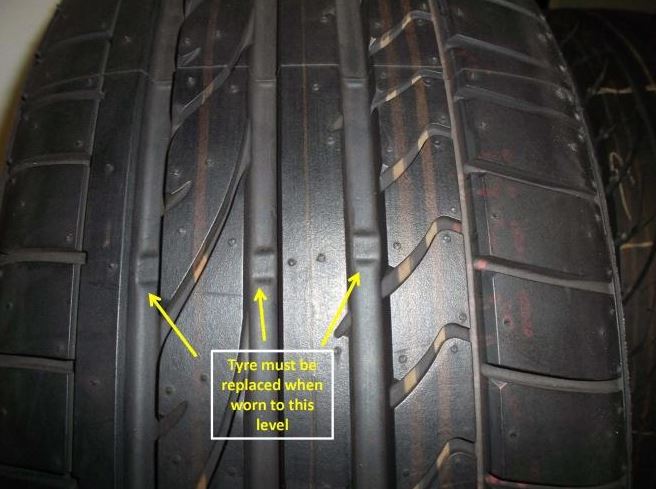With Spring just a few weeks away, drivers in summer rainfall areas should start thinking about the first rains and ensure their tyres are up to the job. This is the message from tyre maker Bridgestone who said that one of the best tools for determining tyre condition was the Tread Wear Indicator (TWI).
“The Tread Wear Indicator is an easy way to determine how much tread is left,” said Bridgestone PR Manager, Mandy Lovell. “It’s a raised bump in each tread groove which shows up once the tread has worn level with it. Once the tread has worn this far, the tyre must be replaced,” she explained.
South African traffic law gives two conditions for tread depth – the tyre may either be worn to a maximum of 1mm of tread remaining over the entire tread surface of the tyre, or down to the TWI if the tyre has one. The TWI usually indicates a tread depth of 1.6mm. Many drivers are not aware that a tyre with an exposed TWI is illegal.
Legalities aside, a tyre with 1.6mm of tread remaining is almost incapable of dispersing large quantities of water to ensure the tyre can remain in contact with the road. Tyres should be replaced once they have 3mm or less of tread remaining, to ensure continued safety by reducing the risk of aquaplaning, where a tyre which can no longer disperse enough water to remain in contact with the road, and instead skims along on top of the film of water.
“If there’s enough water on the road or the vehicle’s speed is high enough, even a brand-new tyre with full tread depth could aquaplane,” Lovell explained. “A tyre worn to the TWI is unlikely to cope with the sudden deluge of water of a Gauteng thunderstorm.”
Long dry periods result in drivers becoming accustomed to having high levels of steering and braking traction, and that this could lead to complacency setting in, in wet weather where traction can be half of what it is in the dry.
“Also remember that the roads have been accumulating all sorts of contaminants over the dry season: oil, grease, tyre debris, sand and gravel,” she explained. “In the first rains of the season, all these contaminants will be mixed with rainwater, creating very slippery conditions for drivers with even the best tyres on their vehicles, and a potential deathtrap for drivers with worn or inferior tyres.”
The TWI wear pattern could also reveal incorrect inflation or wheel alignment, and motorists are advised to have these aspects checked ahead of the first rains. “Ask your fitment centre to ensure your vehicle and tyres are ready to provide full traction when the heavens open. That way, you’ll be able to stay safe in the rainy season,” she concluded.
Also view:
